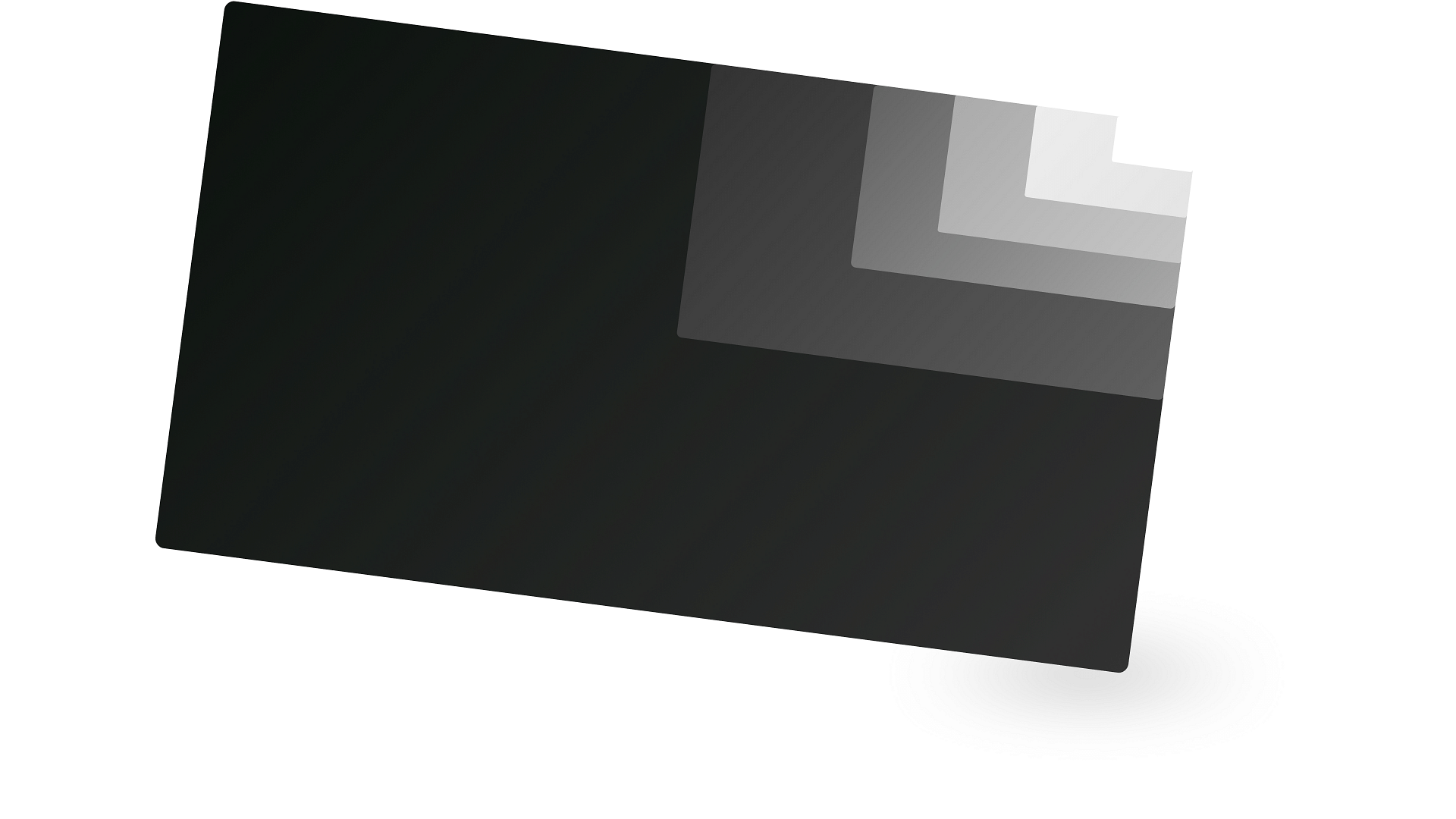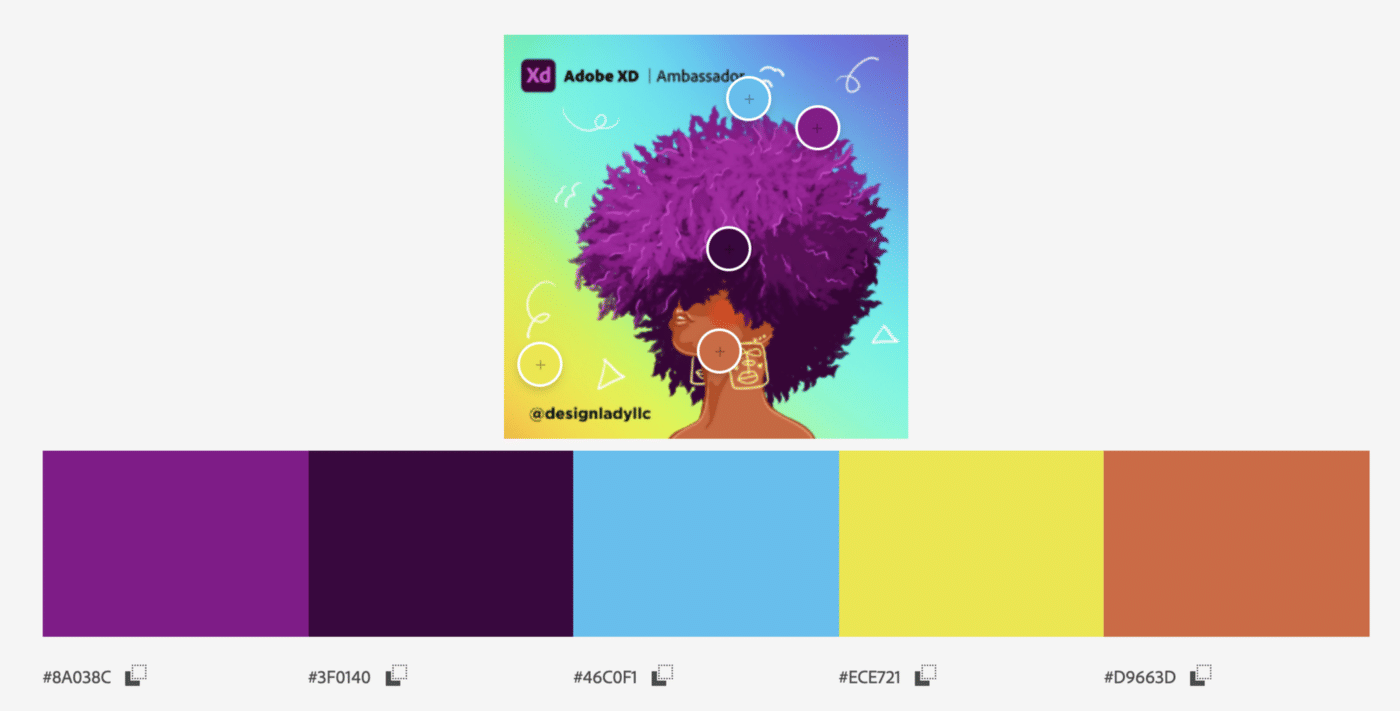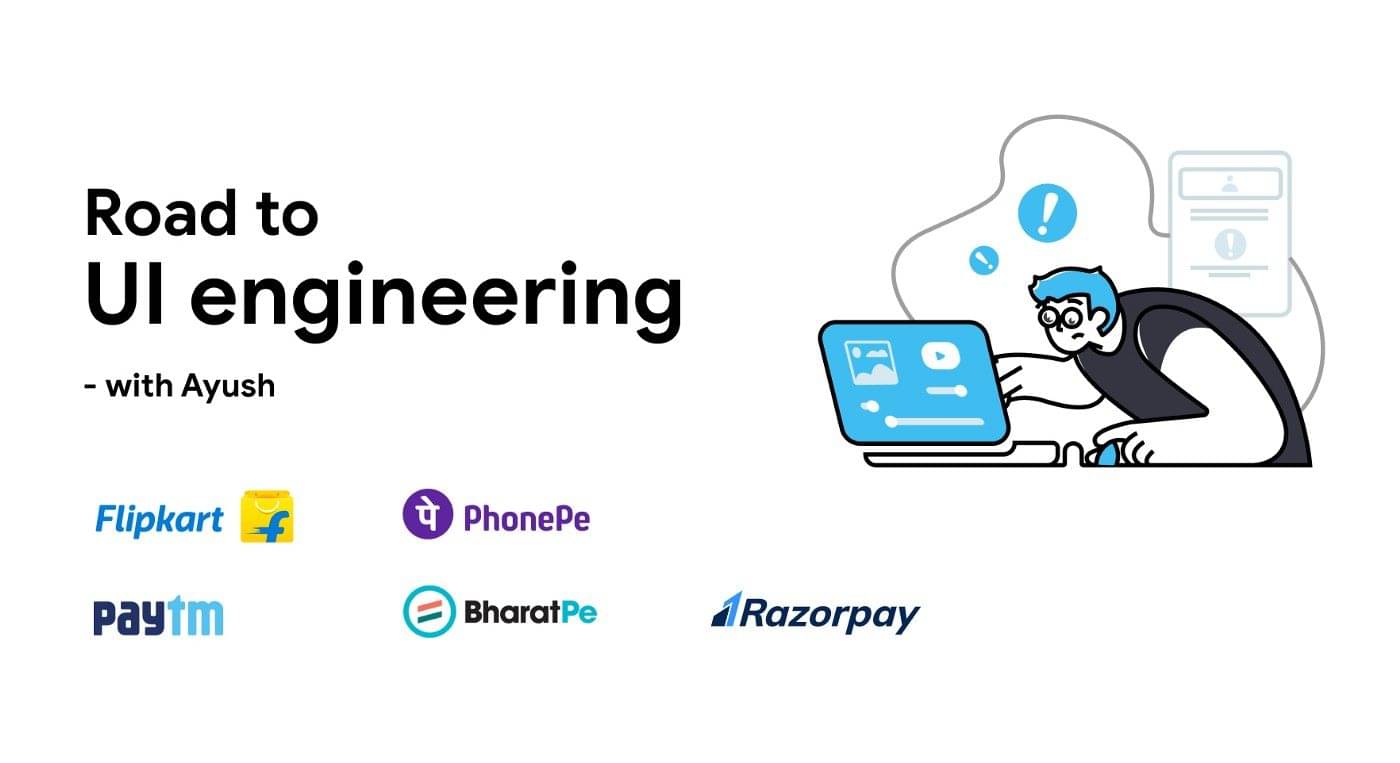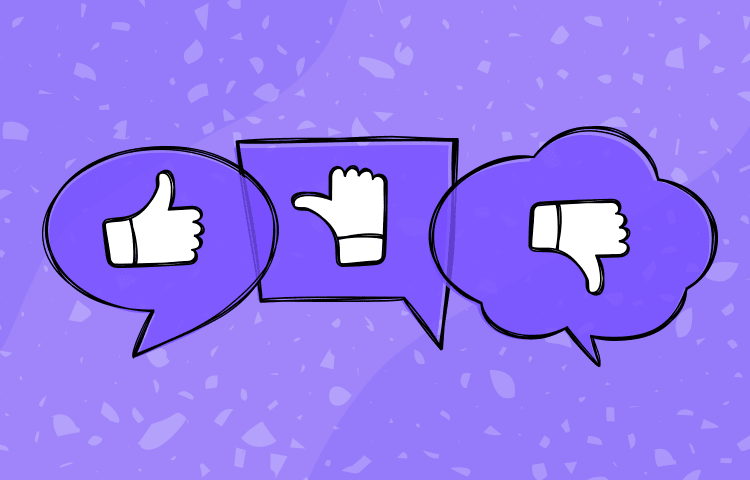
Creator Series | Ep. 5 – Meet Christine Nishiyama
If you’re looking to ditch your regular job to start your own creative business, this episode of Creator Series is for you! Meet Christine Nishiyama, artist and founder of Might Could Studios, and teacher to over 70,000 aspiring and established artists.
Christine made drawing her full-time career for over 7 years, moving from full-time illustrator to running an online artist community. She’s also a published author!
We’ve asked her what it takes to make such a transition, and what it’s like to build something as huge as Might Could Studios being an independent artist! Find out how to prioritise tasks, balance jobs, and learn new skills.
…but let’s start with Chrisitine’s spirit animal:
1. If you had to be a mix of two animals, which would you choose?
Oh, definitely a tarsier (that primate with huge eyes) mixed with a hawk because I’d basically be a flying fluff ball! You could call me a Tarawk.
2. You started your own Art business completely from scratch 😲 – can you give us an overview of what you do?
I’m Christine Nishiyama, artist and founder of Might Could Studios. I basically do 4 things: I write weekly essays on creativity, run a drawing challenge (#MightCouldDrawToday), host an online artist community (Might Could Studiomates), and I also make books (currently illustrating the 3rd in a 4-book series with Scholastic, called Layla and the Bots.)
3. We love your illustrations – how did you know art was the right direction for your career?
Thank you! I started drawing as a kid and basically taught myself to draw by copying Pokemon and Sailor Moon. As I got older I decided to go into graphic design, but once I got a full-time job, it wasn’t quite as creative as I had hoped. Over the years, I got back to my roots and began working full-time as an illustrator. I think I’ve always been drawn (pun!) to drawing because it’s such an amazing way of communicating. I can say so much in a drawing that can be said in words. I’m pretty soft-spoken and mumble a lot in-person, but I found my voice in my art and learned how to speak boldly and honestly.
I can say so much more in a drawing than can be said in words.
I’m now able to use art as a way to communicate with others and myself, uncovering the thoughts and emotions (I call them blobbies) in my mind and letting them all out on the page!

4. How did you transition from freelance to running art classes at Might Could Studios? What’s it like working on your own?
Yeah, I’ve been self-employed since 2012, and it’s been amazing. It was a huge struggle at first to transition into freelance life, learning how to balance client communication, marketing, finances, doing the actual work, and personal life. But I’m a pretty self-motivated person and I love having control over my time and work choices. I think it’s extra hard to work on your own as an artist because there’s a lot more self-worth and personal stuff tied up in your job, rather than say, an accountant, or something. There’s a really nice Adam JK artwork that sums it up nicely.
5. A comfortable “regular” job vs. the hard path – why did you choose to go your own way?
Well, I tried out the whole “regular job” thing first. I worked for a year as a designer in a studio, but there was always just something itching at the back of my neck. I didn’t want to be designing other people’s ideas for the rest of my life — I wanted to explore my own. I could have chosen to have the regular day job, and moonlight creative work, but I’m just not cut out for an office job. I love working from home in my pajamas with my dog, and being able to go on walks and hikes on a Wednesday afternoon. That freedom is extremely important to me, and it was worth the pay cut and uncertainty that comes with working on your own.
6. How do you stay disciplined to run your own business – do you have a routine?
I’ve always been very routine-oriented, and I used to have a pretty regimented daily routine, doing the same things at the same times. But last October, we had our first baby — pseudonym: Butterbean — and all that got thrown out the window! She’s now 10 months old, and we’ve been able to figure out a sort-of-routine, but having a baby and working from home definitely requires more flexibility. Sometimes she naps for 30 mins, sometimes for 2 hours, and you gotta use that time to get stuff done! It’s made me more efficient and I can get into that Deep Work zone a lot quicker now than I used to.

Basically, my day-to-day is now waking up around 6:30 am with Butterbean and playing, feeding, being with her until 9 am. Then on some days my husband, who also works from home, watches her, and some days our nanny comes. Then I get to work until noon when we all break for lunch. If it’s a nanny day, I work until 3, or if it’s not then it’s my turn to play with Butterbean for the afternoon. We’ll often go for a walk, or a hike, or something outside. Then I cook dinner, and put Butterbean down for sleep around 7 pm, and get some relaxation time to myself. So some days I get to work for ~6 hours and sometimes just 3. But those hours are so much more productive than they used to be!
7. How do you prioritise what to work on? Can you take us through your secret process?
This totally depends on what the project is! For Layla and the Bots, the book series I’m working on right now, I sketch first in Procreate on my iPad, receive feedback from Scholastic, revise the sketches on Procreate, and then bring it all into Photoshop on my MacBook Pro. From there, I draw the final artwork in Photoshop using my iPad, Apple Pencil, and Astropad, which basically mirrors my MacBook screen onto my iPad.

For my essay illustrations, like on Prototypr.io, I write the essay in Notion, I let it sit, then reread and revise it, and then I draw the illustrations in my sketchbook with a Tombow Dual Brush Pen. Then I snap a photo of the illustrations, edit them in Photoshop, and send out the essay!
8. We’re familiar with design tools, but what are your go-to tools as an illustrator?
Oh, goodness! Too much! Well, I already mentioned my digital tools above, and most of my tools are for my sketchbook. I draw something in them pretty much every day, and have a huge stack of all different sizes and kinds dating back to High School! I tend to go through obsessions with tools, cycling through different ones. Right now I’m actually kind of in-between and searching for my next tool obsession. Previously, it’s been Posca paint pens, Copic markers, magic color-changing colored pencils, and watercolor brush pens. But my go-to is always the Tombow Dual Brush Pen, and that’s what I use for the essay illustrations. As for sketchbooks, I’ve used all different kinds, but my current favorites are the Strathmore Mixed Media 75lb (for Poscas) and the Fabriano EcoQua Notebook for Tombows. I usually have about 5 sketchbooks going on at once, each for a different tool or series.
9. You write a lot too! How important is writing to your business, and how did you wind up becoming a writer?
The writing aspect was a complete surprise to me. I never considered myself a writer, but here I am now having written over 100 weekly essays to a list of over 12,000 people! It’s insane. It’s become one of my absolute favorite and most fulfilling aspects of my job. And funnily enough, it evolved for totally selfish reasons. I’ve struggled with a lot of the same issues I write and teach about, and when I’m writing these essays, I’m almost always writing to myself. I choose topics and write what I need to hear, giving myself a pep talk or a kick in the butt… whatever I need at that moment. I think that’s what makes the essays resonate so much with people, I’m not writing as someone who has all the answers, I’m writing as someone who’s in the trenches, going through the same issues you are, and just doing my best to learn how to work and live as an artist.
I’ve struggled with a lot of the same issues I write and teach about, and when I’m writing these essays, I’m almost always writing to myself.
When I start an essay I have no idea where it’s going, but along the way, I’m able to crystallize my thoughts and really organize the way I think about things. It’s been amazing and has given me a really clear philosophy on artmaking and creativity that now guides everything I do.
10. How important is it to be consistent? How do you keep coming up with new topics and material for your writing?
It is difficult to keep it up consistently, but sending out the essays weekly actually helps take the pressure off them. If I were just aiming to make a series of essays as a group, I’m sure I would get caught up in trying to make a cohesive series, trying to make them perfect, and organizing ideas for so long I’d never actually get anything done. But knowing that I’m doing one every week breaks it up into doable chunks. I spend every Monday writing the essay, and wherever it’s at on Tuesday morning, well, that’s what ya get. There’s no procrastinating when you have the accountability of a weekly schedule.

Sometimes though, I will admit, that the pressure has gotten to be too much, and I’ve gotten better at giving myself breaks. That’s one reason I love that the essays are free, as I don’t need the added pressure and stress of having to please paying readers. I write these essays on whatever I want to, and although I do publish them ALMOST every week, I’m willing to prioritize my mental health when I need to a take a break. I know now that that’s what will allow me to keep doing this sustainably.
11. Also, how do you keep a good balance between your job, writing, personal life?
I’ve gotten pretty good at splitting up my days into different activities. Each day of the week has different projects that happen weekly, so that gives my job a stable routine. For example, I spend every Monday writing and illustrating that week’s essay, and then send it out every Tuesday morning. I also have designated sketchbook drawing times scheduled on my calendar each week to make sure I make time for that too.

I also know freedom of my time is a huge reason why I choose to run my own business, so I’m careful to keep up my work/life balance. I don’t work past 6pm or on weekends now unless I absolutely have to. When you work from home it can be really easy to just work all the time (especially when you love your job!), but I know I need breaks and other hobbies and activities to live a healthy life. Plus, with Butterbean in our life now, I want to be sure to prioritize being with her as often as I can! It’s nice to have her to remind me of what’s important. She helps to anchor me in the present moment and step away from my computer to enjoy exploring the world around us!
12. You’ve written some articles on creative productivity. What’s the biggest advice you can give to someone that’s struggling on this matter?
My philosophy is that artists (and people in general) think we need more techniques and hacks, but what we really need is a change of mindset. We think we can find the perfect routine or time-blocking technique or kanban board to help us “Get Things Done”, but usually the issues blocking us are much deeper than that. We’re often way too hard on ourselves and do too much worrying and future-tripping instead of being present and doing the thing TODAY. You don’t have to do some big, extravagant thing — just draw something for 5 minutes. Those little bits of creating add up, and then you look back, and you’re like, “man! I’ve filled up all those sketchbooks”! There’s no rush.
We’re often way too hard on ourselves and do too much worrying and future-tripping instead of being present and doing the thing TODAY.
13. Finally, you have extensive industry experience. Looking at the current picture, what would you say to someone that’s just starting in design?
I’m so happy to see where the world of art and design is going right now, and the whole designer as author movement.
Designers used to be seen as just a hand to carry out someone else’s ideas, but now they’re really rising up and taking more action on their own ideas!
So I guess I’d say to someone just starting out: you don’t have to wait on finding “cool” clients to work on projects you’re passionate about — you can make their own stuff! Create your own projects! Bring to life your own ideas! Be your own client. Start something fun you love to work on and see where it takes you. 🙂
14. Where can we follow your work?
Thanks for reading! If you’d like to get the weekly creativity essays I talked about, you can join my email list and check out our artist community, Might Could Studiomates!

Read more from Christine in our blog →
You Need to Be Drawing Consistently
Online Classes Don’t Work
The 5 Types of Creative Block
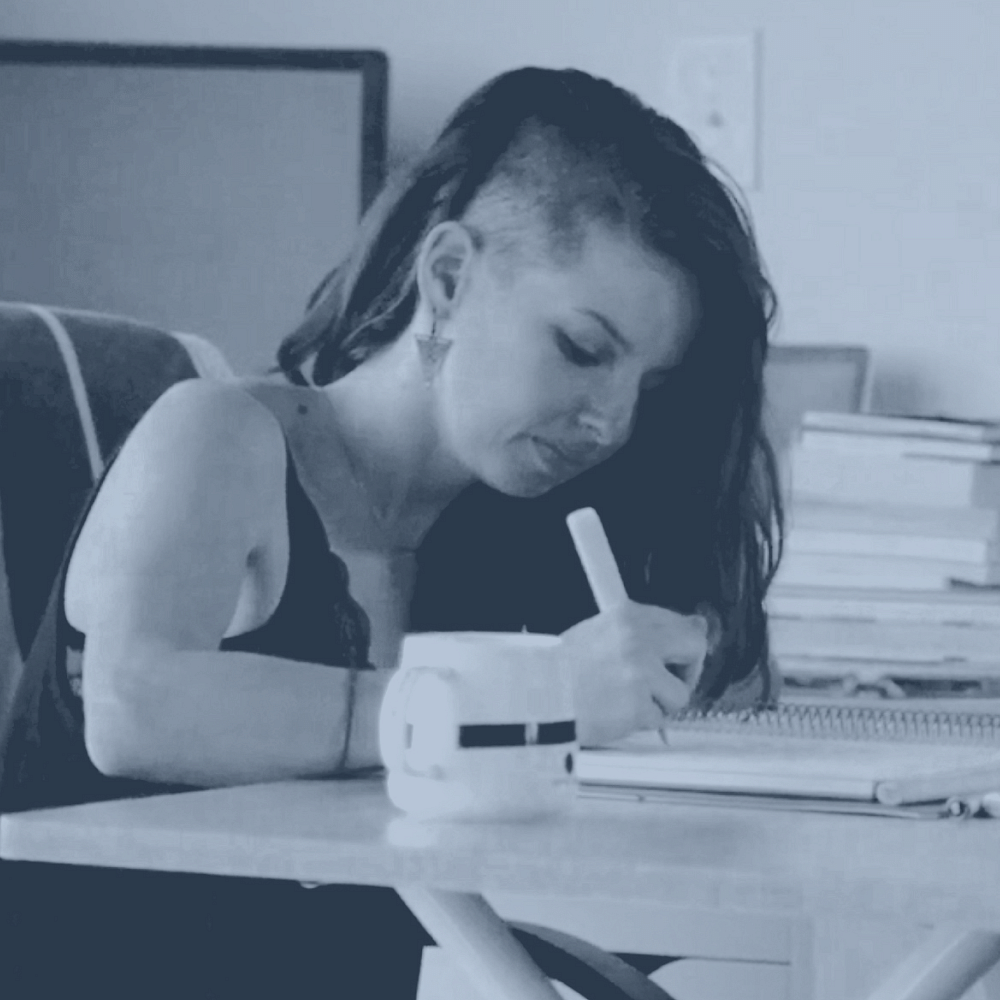

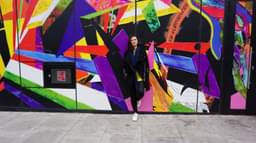
 Buy me a coffee
Buy me a coffee